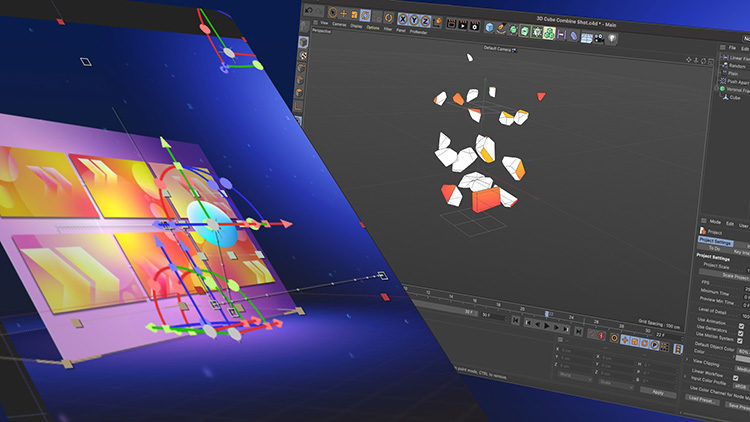How do the animators at Dead Ready Productions celebrate International Animation Day? By creating an animation showcasing all the skills we can offer our clients of course!
International Animation Day was an international observance proclaimed in 2002 by the Association Internationale du Film d’Animation (ASIFA), a non-profit corporation devoted to cultivating and promoting the art, craft and profession of animation.
Celebrated annually on the 28th of October, International Animation Day commemorates the first public performance of Charles-Émile Reynaud’s Théâtre Optique at the Grevin Museum in Paris in 1892.
The Théâtre Optique is an animated moving picture system invented by Émile Reynaud and patented in 1888. From 28th October 1892 to March 1900 Reynaud gave over 12,800 shows to a total of over 500,000 visitors at the Musée Grévin in Paris.
Thanks to the ASIFA, International Animation Day is now considered to be a global event celebrating the art of animation.
In this article, our Lead Animator, Chris Lupton, explains the 8 creative stages involved and how they were applied to our animation (watch below) in celebration of International Animation Day 2022.
The Creative Process
Stage 1. Brainstorming
Definition: A group creativity technique by which efforts are made to find a conclusion for a specific problem by gathering a list of ideas spontaneously contributed by its members. (Wikipedia)

Brainstorming sessions are an important stage of any project so the whole animation department got together, found reference materials for style and animation approach and used Pinterest to collect visual imagery to draw inspiration from.
It was decided that this was a great opportunity to not only represent the varied animation approaches that Dead Ready Productions offer, but to demonstrate the processes involved in creating those animations.
The video would therefore tell the creative story, touching on each stage of production: storyboarding, animatics, design/illustration, character rigging, various styles of animating, sound designing and last but not least, the tedious (but essential) rendering process.
Stage 2. Storyboarding
Definition: A storyboard is a graphic organiser that consists of illustrations or images displayed in sequence for the purpose of pre-visualising a motion picture, animation, motion graphic or interactive media sequence. (Wikipedia)

Once a solid understanding of a visual style and the story that was to be told was confirmed, the next stage is storyboarding. Initial sketches were made by Lead Animator, Chris Lupton, using the software Procreate.
The sketches were laid into a storyboard using Boords, an online storyboarding software, to give a visual idea of the overall flow of the story.
Stage 3. Animatic
Definition: An animatic is an animated storyboard – a slideshow of images depicting movement. Storyboard images are cut together to make a rough draft animation, usually with sound effects or music, giving filmmakers an idea of what the final animation or live-action sequence will look like. (masterclass.com)

Once all the sketches were finished and arranged, an animatic of the storyboard timed to music was created. The soundtrack was also selected and added at this stage.
The below video shows how the finished animation compares to the animatic stage.
Stage 4. Design / Illustration
Definition: Graphic design can be defined as the art or practice that helps you communicate your messages and ideas with the use of visuals, whereas illustration can be defined as a visual explanation or interpretation of an idea, process or concept. (London College of Contemporary Arts)
Alongside the creation of the animatic, Chris and Graphic Designer, Hollie Coote, began illustrating and creating the graphics for the video. The video uses various forms of animation so there were multiple design approaches to consider for the 2D environments and 3D where necessary.
A combination of Adobe After effects and Illustrator were used for the 2D elements and Cinema 4D software was used for the 3D Modelling and texturing.
The creation of a colour pallet also happens at this stage of the process – a video that adheres to an on brand colour pallet throughout helps to keep the video coherent and give it its identity.
Stage 5. Motion Graphics (animation)
Definition: Motion graphics (sometimes mograph) are pieces of animation or digital footage which create the illusion of motion or rotation, and are usually combined with audio for use in multimedia projects. (Wikipedia)

The animation stage was a team effort as it combined multiple animation formats (3D, 2D and stop motion – it is also when any characters are rigged and graphics are made to move, see explanation of in stage 6).
Lead Animator, Chris, worked with Animator and stop motion expert, Mia Moore to devise a cost-effective way to create the hero sphere element – namely a ball of Blu tac! Multiple photos were taken of the Blu tac ball, which was colour corrected to match the colour pallet of the video.
It was important that the 3D sections blended with the 2D sections seamlessly, so Maxon’s Cinema 4D software and Video Copilot’s Element 3D was used to achieve a perfectly blended look.
Stage 6. Character Rigging
Definition: Character rigging is a technique used in skeletal animation where you add control to a model. It defines the range of movement for a character or object to define its actions, gestures and movement. (Adobe)

Taking the time to rig a character makes the animation process much simpler in the long run.
Whereas without it, you would need to move each individual piece of a character’s body e.g. to move an arm you would need to move the wrist, the forearm, the shoulder, all whilst ensuring the elements appeared attached to each other, character rigging allows one element e.g. the wrist, to move the whole arm.
TOP TIP: To ensure project deadlines are met, always encourage client sign off on any characters before moving onto the rigging and animation stage, as re-rigging and re-animating is both timely and costly.
Stage 7. Sound Design
Definition: Sound design is the art and practice of creating soundtracks for a variety of needs. It involves specifying, acquiring, or creating auditory elements using audio production techniques and tools. (Wikipedia)

Sound design is the extra layer that brings an animated production to the next level.
The application of sound design usually varies during the production. Music is generally applied early in the animation process, whilst any sound effects (only if an animation is locked off), are added towards the final stages.
If a movement changes within an animation so too does the sound effect relating to that movement, so to keep things simple, all sound effects are saved. This helps to speed up the process.
Stage 8. Rendering
Definition: Rendering is the process involved in the generation of a two-dimensional or three-dimensional image from a model by means of application programs. (techopedia.com)
The all-important rendering stage is the equivalent if clicking save, but the time it takes to render depends entirely on the components featured.
The rendering of this 30 second animation for International Animation Day took 20 minutes due to the lighting effects, 3D visuals and detail animation used to create it.
When working on any animation and/or design the Motion Graphic Designer will always be considering how long a scene could take to render. This knowledge ensures the highest standard is delivered to clients and that deadlines are met.
If you would like to find out more about these or any other animation approaches, please feel free to get in touch via the button below or by calling +44 (0)208 339 6139.




